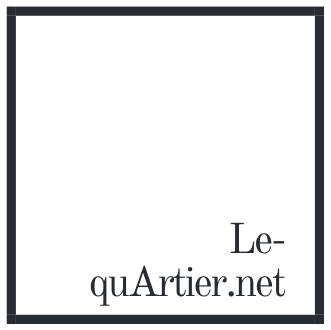MARC BAUER / DIERK SCHMIDT
[English Below]Les deux artistes invités au Quartier, Marc Bauer et Dierk Schmidt, s’intéressent à la façon dont la peinture figurative peut représenter un événement. La peinture d’histoire, établie comme genre principal en peinture dès le XVIIe siècle, produit des images symboliques en isolant des faits marquants et en dégageant un sens moral qui relie le passé au présent. Ce genre particulier, abandonné à la période moderne, est ici convoqué de manière décalée pour faire écho aux réalisations picturales de Marc Bauer et Dierk Schmidt. Le régime des images actuel peut-il être mis au défi par la peinture ? Notre perception du temps qui passe et de l’histoire est-elle perméable aux sensations picturales ? Comment la peinture d’histoire se renouvelle-t-elle au contact de différentes techniques ? Invités en résidence à Quimper, ils ont chacun travaillé avec des artisans locaux, Marc Bauer avec la Faïencerie Henriot-Quimper et Dierk Schmidt en collaboration avec le maître verrier Antoine Le Bihan et l’Atelier couleur et verre.
Dierk Schmidt revisite la peinture d’histoire dans un monde dominé par l’information et les médias. Il s’intéresse particulièrement à l’histoire postcoloniale – largement occultée – et s’interroge sur le pouvoir de représentation des images. Ses projets de recherche, ancrés dans l’actualité, s’accompagnent d’expérimentations sur le médium pictural.
Marc Bauer est un artiste suisse qui fonde sa pratique sur le dessin en noir et blanc, en s’inspirant de différentes sources documentaires télescopées et filtrées par sa mémoire. Il s’intéresse à des événements qui appartiennent à l’histoire collective et qu’il confronte à des trajectoires personnelles. Son traitement pictural par transparences, recouvrements ou estompes fait émerger de nouvelles histoires de manière fragmentaire et elliptique. Parfois combinés à des textes, ses dessins produisent des effets de montage – au sens cinématographique – favorisant la projection mentale des regardeurs.Exposition réalisée en partenariat avec la Faïencerie Henriot-Quimper.Le Quartier’s two guest artists Marc Bauer and Dierk Schmidt are interested in the way figurative painting can represent an event. Can today’s image regime be challenged by painting ? Is our perception of time passing and of history permeable by pictorial sensations ? How is history painting being regenerated by contact with different media ? In projects devised specifically for the space at Le Quartier, the two artists implement distinctive critical methodologies and approaches reflecting the conditions of production of the works.Swiss artist Marc Bauer bases his practice on drawing in black and white, taking his inspiration from various documentary sources telescoped and filtered through his memory. He focuses on events belonging to collective history and compares them with personal trajectories. Working with transparency, overlay and blur, he brings forth fresh histories in a fragmentary, elliptical way. Sometimes combined with texts, his drawings give rise to cinema-style editing effects that stimulate mental projection on the viewer’s part. His project In the Past, Only draws on a residency in Brittany and the encounters fuelling his knowledge of the context. Bauer invents characters, among them a teenage boy and a woman working at the Arsenal in Brest, who provide a narrative structure for his new series of drawings. The drawings are executed on the walls, on paper, or on earthenware objects whose shapes serve as temporal markers. Highlighting his subjects’ social and cultural environment and their intimate memories, he explores the way popular culture constructs its myths and symbols.Dierk Schmidt revisits history painting in a world dominated by information and the media. He is particularly concerned with the largely ignored field of postcolonial history and the representational power of images. Rooted in the present, his images are accompanied by experiments with the paint medium. His installation Image Leaks harks back to the Deepwater Horizon BP oil rig disaster in the Gulf of Mexico in 2010 and the way the company lost control of its image. Disregarding the truth, the company did everything in its power to make the spill invisible, not only by using dispersion agents in the sea, but also by supervising and manipulating the photographs taken underwater. Here Schmidt uses oil paint mixed with crude oil to produce diluted versions of hijacked BP logos found on the Internet ; these were the result of a competition organised by Greenpeace to ‘redesign’ or ‘digitally pollute’ the logo. In this way the artist looks into the free movement of images in a neoliberal economic context and their potential for criticism. His project Broken Windows 3.0 is a follow-up to his work on Berlin’s museums – more specifically the Neues Museum and its ethnographic collection – and the recent shaping of the city’s history through architecture and museum scenography. For the exhibition Schmidt is offering paintings on glass which provide a critical commentary on the presentation of vitrines and ethnographic exhibits. The vitrine thus becomes an optical instrument for examining the objects’ properties and their origins, and the museum itself. Focusing on items likely to trigger debate, Schmidt explores the complex relationships between museums and their collections and the ideal of ‘transparency’ conveyed by these modes of (re)presentation.Keren DettonWith support of Faïencerie Henriot-Quimper
